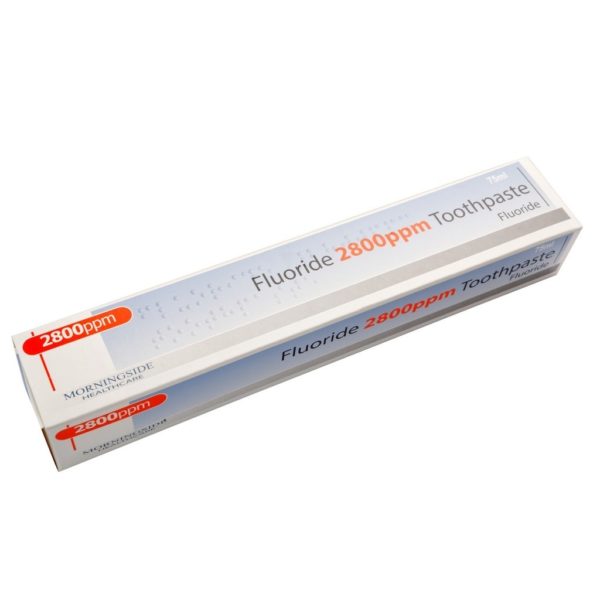Table of Contents
ToggleKey Points
- Research suggests fluoride in water reduces tooth decay, but its safety and environmental impact are debated.
- It seems likely that water fluoridation benefits dental health, especially in underserved communities, yet concerns about health risks like fluorosis and neurotoxicity persist.
- The evidence leans toward minimal environmental impact from water fluoridation, though industrial fluoride pollution can harm ecosystems.
- Sustainability of fluoride use involves balancing dental benefits with resource management, with alternatives like fluoridated toothpaste available.
Introduction to Fluoride in Water
Fluoride in water is a topic that touches on health, environment, and sustainability, making it perfect for an environmental and sustainability blog. This article will explore what fluoride is, why it’s added to water, its benefits and risks, and how it fits into our broader sustainability goals. Let’s break it down in a way that’s easy to follow, like chatting over a cup of coffee.
Benefits and Risks Overview
Fluoride is added to water primarily to prevent tooth decay, a major public health win, especially for communities with limited dental care access. However, controversies arise over potential health risks like dental fluorosis (staining on teeth) and concerns about neurotoxicity, particularly in areas with high natural fluoride levels. Environmentally, water fluoridation itself has a small footprint, but industrial and agricultural fluoride pollution can affect ecosystems, which is crucial for sustainability discussions.
Environmental and Sustainability Considerations
From a sustainability angle, water fluoridation is cost-effective but raises questions about resource use, especially in water-scarce regions. Alternatives like fluoridated toothpaste or salt could reduce reliance on water systems, aligning with sustainable practices. We’ll also look at case studies from around the world to see how different regions handle this balance.
Survey Note: Comprehensive Analysis of Fluoride in Water
Introduction: Unpacking Fluoride in Water
Fluoride in water is a multifaceted issue that intersects with public health, environmental science, and sustainability, making it a critical topic for blogs focused on environmental stewardship. This article aims to provide a thorough exploration, covering its chemical nature, historical context, benefits, risks, environmental impacts, and sustainability implications. Given the ongoing debates, we’ll approach this with a balanced, conversational tone, ensuring readers feel informed and engaged, as if we’re discussing it over a sustainability workshop.
What is Fluoride? Chemical Properties and Natural Occurrence
Fluoride is the ionic form of fluorine, the 13th most abundant element on Earth, constituting 0.08% of the Earth’s crust, with high electronegativity that makes it reactive in various applications. It occurs naturally in minerals like fluorite (calcium fluoride) and cryolite (sodium aluminum fluoride), and is found in groundwater, with concentrations varying by region. For instance, some areas in India and China have naturally high levels (up to 10 ppm or more), leading to health concerns like skeletal fluorosis, which we’ll discuss later.
| Aspect | Details |
|---|---|
| Chemical Nature | Ionic form of fluorine, highly electronegative, reactive in industrial uses. |
| Natural Occurrence | Found in minerals (fluorite, cryolite), groundwater (varies, e.g., 0–10 ppm in some regions). |
This natural presence is why fluoride is already part of many water systems, but human intervention through water fluoridation adds another layer.
Water Fluoridation: Historical Context and Methods
The practice of adding fluoride to public water supplies began in the 1940s, inspired by observations in the early 20th century that areas with naturally high fluoride (e.g., Colorado) had lower dental decay rates. Grand Rapids, Michigan, was the first to fluoridate in 1945, setting a precedent. Today, about 70% of U.S. public water supplies are fluoridated, with a recommended level of 0.7 parts per million (ppm), adjusted from 0.7–1.2 ppm in 2015 to account for other fluoride sources like toothpaste.
Methods involve adding compounds like sodium fluoride, fluorosilicic acid, or sodium fluorosilicate during water treatment, ensuring a consistent concentration for dental health benefits without exceeding safety thresholds.
| Historical Milestone | Details |
|---|---|
| 1930s Discovery | Natural fluoride linked to lower decay, varying from 0 to over 4 ppm. |
| 1945 Start | Grand Rapids, Michigan, first to fluoridate, setting global trend. |
| Current Standard | 0.7 ppm recommended by U.S. Public Health Service, updated in 2015. |
This historical context shows why fluoridation became a public health strategy, but it’s not without controversy.

Benefits of Fluoride in Water: Dental and Public Health Impacts
Fluoride’s primary benefit is reducing tooth decay, a major public health issue. Research, including a 2015 Cochrane review, found that water fluoridation led to a 35% reduction in decayed, missing, or filled baby teeth and a 15% increase in children with no decay in permanent teeth. This isn’t just about individual health; it’s a passive intervention, meaning everyone who drinks tap water benefits, which is huge for reducing oral health disparities in underserved communities.
Economically, it’s a win too. Healthier teeth mean fewer dental treatments, potentially saving individuals and healthcare systems money. Some studies suggest children with fluoridated water may earn more as adults due to better oral health, impacting quality of life and well-being.
| Benefit | Evidence |
|---|---|
| Cavity Reduction | 25% reduction in children and adults, per CDC studies (CDC Fluoridation). |
| Public Health Equity | Passive delivery reduces disparities, especially in low-income areas. |
| Economic Impact | Potential higher earnings in adulthood due to better oral health, per Johns Hopkins research. |
The CDC has declared community water fluoridation one of the 20th century’s greatest public health achievements, endorsed by organizations like the ADA, WHO, and AMA, highlighting its broad impact.

Controversies and Risks Associated with Fluoride: Health and Environmental Concerns
Despite the benefits, fluoride in water isn’t without critics. Let’s break down the concerns.
Health Risks: From Fluorosis to Neurotoxicity
- Dental Fluorosis: This is the most common side effect, caused by excessive fluoride during tooth development. It results in white specks or brown stains on teeth, with a 41% prevalence among U.S. adolescents aged 12–15 in 1999–2004, though most cases are mild and cosmetic.
- Skeletal Fluorosis: At very high levels (far above fluoridation standards), fluoride can cause bone stiffness and deformities, seen in regions like India and China with natural levels exceeding 4 ppm, but not in fluoridated communities.
- Neurotoxicity Concerns: Some studies suggest high fluoride exposure (e.g., above 1.5 ppm) may lower IQ in children, particularly in areas with naturally high levels. However, at standard fluoridation levels (0.7 ppm), a 2022 Australian study of over 2,500 children found no negative impact on cognitive development at 1.1 ppm (Australian Study). A 2023 meta-analysis also concluded no measurable IQ effect up to 1.5 ppm (Meta-Analysis).
- Cancer Risk: Osteosarcoma, a rare bone cancer, has been studied, but larger studies, including a 1991 U.S. Public Health Service report, found no detectable risk from optimal fluoridation (Cancer Society).
These health concerns fuel debates, with some advocating for removal, like Robert F. Kennedy Jr.’s 2024 proposal, while others, like the ADA, reaffirm safety.
Environmental Risks: Pollution Beyond Water Fluoridation
While water fluoridation itself has minimal impact, broader fluoride pollution from industrial and agricultural sources is concerning. Industries like aluminum smelting and fertilizer production release fluoride into air and water, leading to soil contamination. Agricultural runoff from phosphate fertilizers, containing fluoride, can leach into groundwater, affecting ecosystems. For example, high fluoride levels have been linked to reduced plant growth and yield, and animal health issues like bone deformities in livestock.
| Source of Pollution | Impact |
|---|---|
| Industrial Waste | Releases fluoride into air and water, contaminating soil and harming wildlife. |
| Agricultural Runoff | Phosphate fertilizers leach fluoride into groundwater, affecting plants and animals. |
| Wildlife Impact | Linked to bee die-off, livestock anorexia, and respiratory failure in polluted areas. |
This broader pollution is a sustainability concern, as it affects biodiversity and ecosystem health.
Environmental Impact of Fluoride in Water: Aquatic and Broader Effects
Let’s zoom in on the environment. A study evaluating municipal water fluoridation’s impact found it negligible on aquatic systems. For instance, in Montreal, fluoridation would increase river fluoride levels by 0.001–0.002 mg/L, too small to measure and well below safety thresholds, not exceeding natural levels elsewhere in Quebec (Environmental Study). This suggests water fluoridation itself is environmentally sustainable.
However, the bigger picture includes industrial and agricultural fluoride pollution, which can harm plants (reducing growth) and animals (causing bone issues). For example, livestock in areas with high fluoride pollution have shown symptoms like anorexia and respiratory failure, and there are reports of bee die-offs linked to fluoride exposure.
| Aspect | Details |
|---|---|
| Aquatic Impact | Minimal, with increases of 0.001–0.002 mg/L in rivers, below safety thresholds. |
| Broader Pollution | Industrial and agricultural sources cause soil and water contamination, affecting biodiversity. |
This dual perspective is crucial for sustainability discussions, balancing fluoridation’s benefits with pollution risks.
Sustainability and Fluoride Use: Balancing Benefits and Resources
Is fluoride use sustainable? From a resource perspective, water fluoridation is low-cost (less than $1 per person per year) and efficient, delivering dental health benefits to large populations. However, some argue it’s less sustainable in water-scarce regions, where alternatives might be better.
Resource Management and Alternatives
Given fluoride’s primary benefit is topical (on teeth), delivering it through toothpaste, mouth rinses, or professional treatments could be more resource-efficient. Alternatives include:
- Fluoridated Toothpaste: Widely used and effective, reducing reliance on water systems.
- School-Based Programs: Providing fluoride varnishes to high-risk children.
- Fluoridated Salt or Milk: Used in some countries, like Switzerland, as an alternative delivery method.
These options could align with sustainability goals, especially in areas where water resources are limited.
| Alternative | Sustainability Benefit |
|---|---|
| Fluoridated Toothpaste | Reduces water system reliance, accessible individually. |
| School Programs | Targets high-risk groups, efficient resource use. |
| Fluoridated Salt/Milk | Community-level delivery, reduces water fluoridation needs. |
This approach could help balance dental health with environmental stewardship.
Case Studies: Global Perspectives on Fluoride in Water
Let’s look at real-world examples to see how this plays out.
Successful Fluoridation Programs
- United States: Cities like Chicago and New York have long-standing programs, with documented 25% reductions in tooth decay, per CDC data (CDC Fluoridation).
- Australia: Fluoridation has significantly improved oral health, with a 2022 study showing no cognitive impact at 1.1 ppm (Australian Study).
High Natural Fluoride Areas
- India: Regions with natural levels up to 10 ppm face skeletal fluorosis, affecting millions, highlighting monitoring needs.
- China: Similar issues, with health impacts in areas with high groundwater fluoride.
Areas That Stopped Fluoridation
- Calgary, Canada: Stopped in 2011, saw increased cavities in children, leading to debates on reinstatement.
- Europe: Many countries (e.g., Germany, Sweden) don’t fluoridate, relying on education and dental care, with mixed outcomes on decay rates.
These case studies show the diversity of approaches and outcomes, informing sustainability strategies.
Conclusion: Balancing Act for Sustainability
Fluoride in water offers clear dental health benefits, supported by decades of research, and is cost-effective for public health. However, risks like dental fluorosis, potential neurotoxicity at high levels, and environmental pollution from industrial and agricultural sources require attention. For sustainability blogs, it’s vital to recognize that while water fluoridation has minimal environmental impact, broader fluoride pollution threatens ecosystems, necessitating action. Alternatives like fluoridated toothpaste or targeted programs could align with sustainable practices, ensuring we protect both health and the planet. As research evolves, balancing these factors will be key.
Key Citations
- Why Is Fluoride in Our Water? Johns Hopkins Bloomberg School of Public Health (Why Is Fluoride in Our Water?)
- Water Fluoridation and Cancer Risk American Cancer Society (Cancer Society)
- The Fluoride Debate: The Pros and Cons of Fluoridation PMC (Fluoride Debate Pros and Cons)
- Fluoride: Risks, uses, and side effects Medical News Today (Fluoride Risks and Uses)
- Fluoridation in Water American Dental Association (ADA Fluoridation)
- Is Fluoridated Drinking Water Safe? Harvard T.H. Chan School of Public Health (Harvard Fluoride Safety)
- The truth about fluoride in water: A public health success story with Colorado roots UCHealth (Fluoride Public Health Story)
- Fluoride: Uses, Benefits & Side Effects Cleveland Clinic (Fluoride Uses and Benefits)
- Fluoride: Good or Bad? Healthline (Fluoride Good or Bad)
- Fluoride in Drinking Water Is Safe. Here’s the Evidence Scientific American (Fluoride Safety Evidence)
- Evaluating the impact of municipal water fluoridation on the aquatic environment PMC (Environmental Impact Study)
- Challenges of fluoride pollution in environment: Mechanisms and pathological significance of toxicity ScienceDirect (Fluoride Pollution Challenges)
- Fluoride Pollution and Harm to the Environment IAOMT (Fluoride Environmental Harm)
- Expert panel meeting on the health effects of fluoride in drinking water: Summary report Canada.ca (Canada Fluoride Health Effects)
- Fluorides, Hydrogen Fluoride, and Fluorine Public Health Statement ATSDR (ATSDR Fluoride Statement)
- Inadequate or excess fluoride WHO (WHO Fluoride Levels)
- Judge orders EPA to address impacts of fluoride in drinking water American Dental Association (ADA EPA Ruling)
- Water Fluoridation: A Critical Review of the Physiological Effects of Ingested Fluoride as a Public Health Intervention PMC (Fluoridation Physiological Effects)
- Study on Cognitive Development and Fluoride Australian Study (Australian Study)
- Meta-Analysis on IQ and Fluoride Exposure Meta-Analysis (Meta-Analysis)
- CDC Community Water Fluoridation CDC (CDC Fluoridation)






